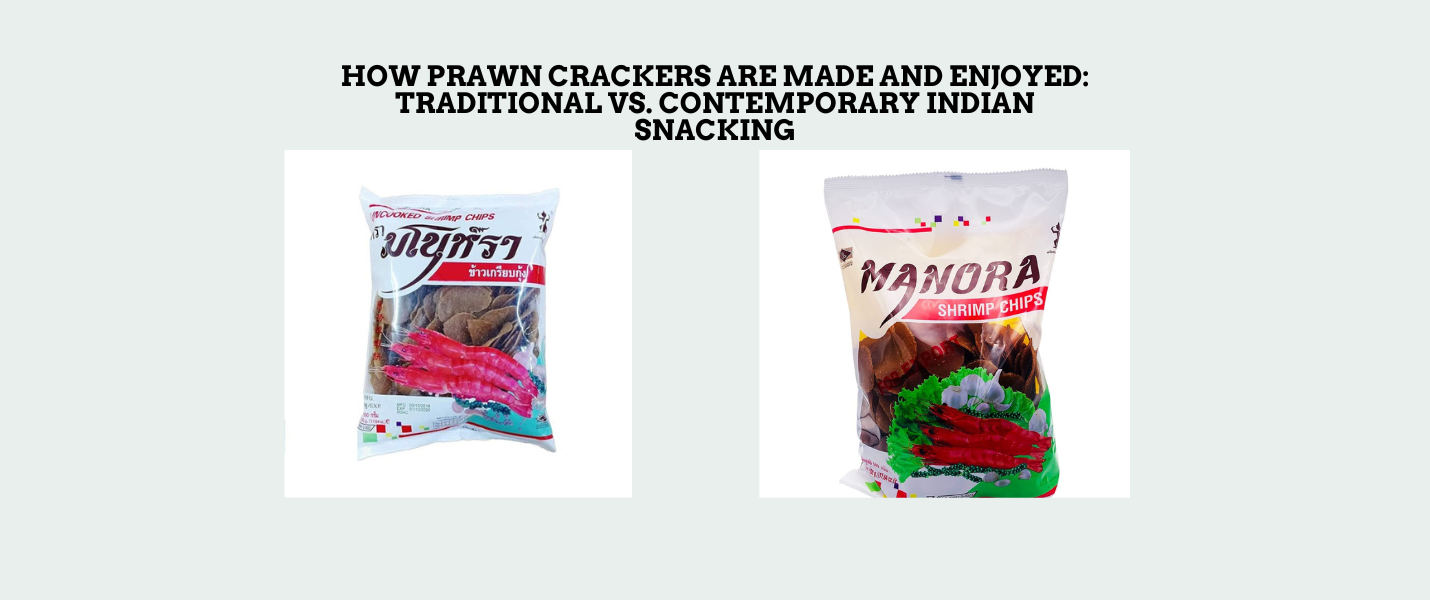

How Prawn Crackers Are Made and Enjoyed: Traditional vs. Contemporary Indian Snacking
Table of Contents
Introduction: The Irresistible Rise of Prawn Crackers
- The snack’s journey from Southeast Asia to Indian kitchens
- Cultural significance and modern reinvention
What are Prawn Crackers?
- Origins and Global Story
- Local Names and Regional Variations
- Key Ingredients
- The Science Behind Tapioca (Why It Puffs)
How Are Prawn Crackers Traditionally Prepared, From Artisanal Methods to Home Kitchens?
- Step 1: Making the Dough
- Step 2: Forming and Steaming
- Step 3: Slicing
- Step 4: Sun-Drying
- Step 5: Deep Frying
- Traditional Features Still Honored
- Regional Tweaks and Family Recipes
- Cultural Data Point
Prawn Crackers in Classic Indian Celebrations
- Goa: “Non-veg papad” at weddings and meals
- Kerala, Andhra, Bengal: Traditional pairings and dishes
- Mumbai & Kolkata: Party snacks and regional adaptations
- Serving Traditions and Popular Accompaniments
- Data Point: Chefspoint Festive Snack Statistics
Contemporary Production, Innovation & Health Aspects
- Industrial vs. Home Methods
- Healthier Variants (Baked, Air-Fried)
- Fusion and New Flavors (Spicy, Wasabi, Masala, etc.)
- Diet-Friendly Options (Gluten-Free, MSG-Free, Low Sodium)
- Nutrition Facts Table (per 25g serving)
- Quick Cooking Tips (Deep Fry & Microwave)
- The Chefspoint Manora Advantage
Modern Indian Ways to Enjoy Prawn Crackers
- Contemporary Pairings & Creative Dishes
- Fusion Dips & Appetizers
- Party Platters and Canapés
- Salads and Crunchy Toppings
- Meal Upgrades and Fusion Dishes
- Chef’s Serving and Plating Tips
Prawn Crackers: Global Popularity and the Indian Snack Revolution
- Global Market Snapshot and Indian Trends
- The Influence of Social Media and Pop Culture
- Why Millennials and Urbanites Love Fusion Snacks
Comparing Traditional and Contemporary Approaches
- Side-by-Side Comparison Table:
- Preparation
- Flavors
- Serving Styles
- Accessibility and Health
Expert Tips on Storing, Frying, and Serving
- Optimal Storage for Raw and Fried Crackers
- Frying Techniques for Best Results
- Best Practices for Serving and Pairing
Conclusion: Bridging Tradition and Trend
- The ongoing legacy and adaptability of prawn crackers in Indian kitchens
- Encouragement to try both traditional and innovative ways
Frequently Asked Questions (FAQs)
- What are prawn crackers made of?
- Are prawn crackers and shrimp chips the same?
- How can I keep prawn crackers crisp after opening?
- Can vegetarians enjoy any version of prawn crackers?
- How do you serve prawn crackers in India?
- What is the best way to cook prawn crackers at home?
- Are prawn crackers healthy?
- Are there gluten-free prawn crackers?
- Can prawn crackers be used in fusion recipes?
- How long do prawn crackers last after opening?
1. Introduction: The Irresistible Rise of Prawn Crackers
Imagine this: you’re at a coastal Goan wedding, the aroma of seafood curries fills the air, and alongside the biryani and tandoori platters, there’s a giant bowl of light, airy, prawn crackers, the “non-veg papad” everyone, from grandparents to kids, can’t seem to resist. Or, it’s Friday movie night at home, and you’re popping prawn chips into hot oil: in mere seconds, they sizzle, puff up, and vanish just as quickly, their umami hit leaving you craving more.
From the beaches of Thailand to Indian family parties, these prawn crackers have journeyed across continents, transcending food trends. What’s surprising in 2025 is how contemporary Indian urbanites are now reinventing and relishing this age-old snack in creative ways—whether with fusion salsas, jazzy canapés, or turning them into posh party starters. But behind their immediate crunchiness lies a tale of heritage, innovation, and clever culinary science.
In this comprehensive guide, we’ll dive into what makes prawn crackers tick—from traditional handiwork and artisanal drying methods to cutting-edge flavors and mass-market ready packs you’ll find at Chefspoint today.
2. What are Prawn Crackers?
Origins and Global Story
Prawn crackers, also called shrimp chips, prawn chips, prawn wafers, or Chinese crackers, are a traditional snack with roots stretching across Southeast Asia—especially Indonesia, Malaysia, Thailand, China, and Vietnam.
In each region, they’re known by a local name:
- Krupuk udang in Indonesia
- Keropok in Malaysia
- Kau Kee in China
- Prawn papad or non-veg papad in coastal India
For centuries, coastal communities found ingenious ways to preserve prawn harvests for lean seasons, and these crackers were the delicious result.
Key Ingredients
Traditional prawn crackers contain:
- Real prawn or shrimp meat or paste (up to 40% in premium varieties, as in Manora’s [prawn crackers at Chefspoint])
- Tapioca flour or sometimes sago starch (the secret to that shattering crunch!)
- Salt and sugar
- Sometimes garlic, onion, white pepper, or regional spices
Notably, quality is everything: Manora, for example, is renowned for using high-grade prawn and natural flavors rather than artificial seafood essence, making them a favorite with Indian foodies seeking authentic taste.
Why Tapioca?
Tapioca flour is amazing for its ability to puff instantly under high heat. Its high starch and low protein content allow moisture inside the cracker to rapidly vaporize when fried, causing the wafer to expand like magic.
3. How Are Prawn Crackers Traditionally Prepared, From Artisanal Methods to Home Kitchens?
Step-by-Step Artisanal Process
Step 1: Making the Dough
Prawns are cleaned, shelled, and finely minced or turned into a paste. This is then mixed thoroughly with tapioca flour, seasoning, a pinch of sugar, and sometimes extra binding starch. Making sure the prawn and flour are perfectly blended (often using stone mortars) is essential for a uniform, crisp network.
Step 2: Forming and Steaming
The dough is shaped into thick logs or rolls (sometimes as large as a forearm!) and then steamed until cooked through. Steaming gelatinizes the starch, setting the dough into a firm, sliceable "cake."
Step 3: Slicing
After cooling, the solid roll is cut into paper-thin slices using a sharp knife or mandoline slicer. This stage determines how crisp and airy the chips will become.
Step 4: Sun-Drying
Slices are spread in a single layer on bamboo baskets under the hot sun for 1–2 days. Sun-drying not only dries them quickly but also intensifies flavor as natural enzymes work their magic. (On rainy days or in modern times, low-temperature dehydrators can be used.)
Step 5: Deep Frying
When it’s time to serve, the dried slices are plunged into hot oil—200°C is optimal. In under 10 seconds, they puff up dramatically, becoming feather-light and crisp. Remove, drain on paper towels, and enjoy!
Traditional Features Still Honored Today
- Family recipes with subtle flavor tweaks are passed through generations.
- Hand-mixing and sun-drying are prized for creating a “cleaner,” more natural taste and maximized crunch.
- Regional tweaks: In Goa and Kerala, some add a touch of chili or coconut to the dough; in Malaysia, fish and squid may be used for variation.
Cultural Data Point
It’s estimated that each year, over 1200 tonnes of prawn crackers are produced in coastal Andhra, Tamil Nadu, and Kerala alone, with 50% still produced by local home-run “papad” units and small artisan businesses [Source: FSSAI, 2023 Export Snack Market Review].
4. Prawn Crackers in Classic Indian Celebrations
You’ll find prawn crackers at festive tables in India, mostly along the western and southern coasts:
- Goa: Called “non-veg papad,” they are an essential starter for special meals and a status symbol at weddings.
- Kerala: Paired with fish curries or biryanis, and even served at Onam Sadya feasts in some Christian households.
- Andhra and Bengal: Used in spicy, tangy, home-style curries.
- Mumbai & Kolkata Parties: Now found as cocktail snacks at both home and restaurant events.
Serving traditions:
- Placed in baskets as an alternative to plain papad.
- Served with fiery green or red chutneys or sweet mango pickle.
- Sometimes crumbled over rice or mixed into “seafood bhujia.”
Data Point: In Chefspoint’s 2024 sales records, prawn crackers are among the top three seafood snacks ordered for festive occasions, after dried fish and fish chips, showing their enduring and growing popularity outside their native states.
5. Contemporary Production, Innovation & Health Aspects
Industrial vs. Home Methods
Industrial methods, led by brands like Manora, now use modern dough mixers, steamers, and low-temperature dehydrators to produce consistent, hygienic, and large-scale batches.
- Ensure uniform thickness and even drying.
- Use quality control to minimize oil absorption and keep sodium levels in check.
Home and small-scale production is making a comeback too, with home businesses using solar dryers and premium local prawns for “boutique” crackers.
Healthier Variants and New Flavors
As Indian snackers grow more health-conscious, brands are reinventing prawn crackers beyond traditional deep-fried versions. Today’s market features baked and air-fried options with reduced oil, plus bold new flavors that suit contemporary and sensitive diets. From spicy masala twists to gluten-free and MSG-free varieties, there’s a prawn cracker for every palate and lifestyle.
- Baked and Air-Fried Prawn Crackers: Offer a guilt-free, lower-calorie alternative with much less oil than the classic deep-fried version.
- Spicy, Tangy, or Wasabi Flavors: Fusion varieties now come in masala, peri-peri, sour cream, or even wasabi, appealing to adventurous Indian taste buds.
- Premium Diet-Friendly Options: Look for crackers labeled gluten-free, MSG-free, or with less sodium—ideal for those with dietary restrictions or seeking cleaner snacking.
Nutrition Table (per 25g serving)
| Nutrient | Amount |
|---|---|
| Calories | 115–125 |
| Protein | 1.5–2.5g |
| Fat | 4–6g |
| Carbs | 18–20g |
| Sodium | 190–230mg |
Quick Preparation: The Chefspoint Manora Advantage
The Manora Prawn Crackers 500g available at Chefspoint require just a quick deep-fry or microwave—puffing up in 30–60 seconds with light, airy texture and authentic prawn flavor.
- Prep tip: Fry in small batches in hot oil (~200°C). Too many at once lowers the oil temp = chewy crackers!
- Microwave hack: Place a few pieces between two sheets of parchment. Microwave for 1 min (watch closely), and you get a lower-fat, crunchy treat.
6. Modern Indian Ways to Enjoy Prawn Crackers
Contemporary Pairings & Creative Dishes
As prawn crackers move beyond their traditional roles in Indian meals, modern kitchens are discovering new and inventive ways to serve and enjoy them. Inspired by global flavors and urban snacking trends, these light, crispy chips now shine in fusion appetizers, party platters, and creative recipes that make every bite exciting.
Fusion Dips & Appetizers
- Serve with peri-peri mayo, wasabi yogurt, tzatziki, or green chutney for a cross-cultural snack.
- Use as a base for Indian-style “prawn cracker chaat”: chopped onions, tomatoes, coriander,, lemon juice, and sev for a tangy canape.
Party Platters and Canapés
- Top with salsa, avocado, or spiced chicken for quick canapés at parties.
- Pair with mocktails, cocktails, or craft beers as a trendy bar snack.
Salads and Crunchy Toppings
- Crush over simple salads (cucumber, carrots, peanuts) for added crunch.
- Toss with masala peanuts or spicy chickpeas for a twist on Bombay mix.
Upgrade Your Meals
- Break prawn crackers into biryanis or rice bowls for contrast.
- Replace papad with prawn crackers in south Indian meals for a modern take.
Chef Tip
Always add prawn crackers just before serving if using as a topping, they absorb moisture quickly but are most satisfying at peak crunch!
7. Prawn Crackers: Global Popularity and the Indian Snack Revolution
Did you know that the global prawn cracker market was worth over $800 million in 2023, with Asia-Pacific accounting for more than 60% of demand? In India, online searches and orders for prawn crackers have grown 40% year-on-year since 2019, according to Chefspoint and industry trackers.
Why?
- Pandemic cooking boosted home-snack innovations and nostalgic foods.
- Cross-cultural food content (think Instagram reels showing Korean, Vietnamese, or Thai snacks) inspired more Indians to experiment.
- Increasing demand for “non-boring” snacks at urban gatherings—data shows 2 out of 3 Indian millennials now serve fusion snacks at house parties.
8. Comparing Traditional and Contemporary Approaches
Let’s see how the classic and the modern stack up:
| Aspect | Traditional | Contemporary |
|---|---|---|
| Preparation | Hand-mixed, sun-dried, deep-fried | Machine-mixed, dehydrated, oven/air-fried |
| Flavors | Prawn-forward, subtle, spices vary | Fusion: peri-peri, masala, wasabi, barbecue |
| Serving | With rice, curry, pickles; in homes | As snacks, bar snacks, with dips or toppers |
| Accessibility | Mostly coastal, home- or small-batch | Mass-market, ready-to-fry, online delivery |
| Health | High in protein, moderate fat-if fried | Baked/air-fried lower in fat, new gluten-free options |
Chefspoint Data Point: The launch of innovative flavors and convenient 500g ready-to-fry packs in 2024 led to a 25% increase in repeat customers for prawn snacks at Chefspoint, especially in metros.
9. Expert Tips on Storing, Frying, and Serving
Storage
- Raw crackers: Keep in an airtight container, away from humidity, for up to 6 months.
- Fried/ready-to-eat: Store in an airtight jar or ziplock; consume within three days for optimal crunch.
Frying
- Always heat oil first, fry in small batches, and remove crackers as soon as they fully expand (usually under 8 seconds).
- Drain on a rack or paper napkin; never stack hot crackers as they soften quickly.
Serving
- Always serve hot or freshly fried for best taste.
- Pair with classic green chutney, tamarind dip, or even cheese sauce for a unique Indian-Western fusion platter.
10. Conclusion: Bridging Tradition and Trend
Whether rooted in the sandy villages of the Konkan or served up at a Mumbai house party, prawn crackers tell a global-meets-local food story. The transition from sun-dried papad to mass-market bar snack is a testament to both their deliciousness and adaptability. If you haven’t tried preparing or experimenting with prawn crackers yet, now is the time, discover authentic Manora Prawn Crackers at Chefspoint, enjoy the best of both worlds, and make every snack time a little celebration of heritage and innovation.
Frequently Asked Questions
1. What are prawn crackers made of?
Prawn crackers typically contain prawns, tapioca flour, salt, and seasonings. This mixture is steamed, dried, and then fried to create the signature light, puffed, and crispy snack.
2. Are prawn crackers and shrimp chips the same?
Yes, prawn crackers and shrimp chips are different names for the same snack in different regions. Both use similar ingredients and preparation methods, resulting in a crunchy, airy texture.
3. How can I keep prawn crackers crisp after opening?
Store prawn crackers in an airtight container away from moisture and heat. Keeping the chips sealed ensures they remain crunchy for several days after the pack is opened.
4. Can vegetarians enjoy any version of prawn crackers?
Vegetarian alternatives, often called vegetarian chips or potato wafers, are available. These use tapioca or potato starch and seasonings but no seafood, making them suitable for a vegetarian diet.
5. How do you serve prawn crackers in India?
Prawn crackers are served as snacks with dips, as accompaniments to rice or curries, or used as a crunchy topping in fusion chaat and party appetizers for extra flavor and texture.
6. What is the best way to cook prawn crackers at home?
Prawn crackers puff up when deep-fried in hot oil (about 200°C) for just a few seconds. Alternatively, you can microwave a few pieces between parchment sheets for a lighter, low-oil option.
7. Are prawn crackers healthy?
Prawn crackers are lower in calories than many fried snacks, but contain sodium and fat due to deep-frying. Opt for baked or air-fried versions for a healthier choice, and enjoy them in moderation.
8. Are there gluten-free prawn crackers?
Yes, most prawn crackers are naturally gluten-free due to tapioca flour as the base ingredient. Always check packaging and ingredient labels to ensure there are no added wheat-based fillers.
9. Can prawn crackers be used in fusion recipes?
Absolutely! Use prawn crackers as a crunchy base for chaat, with salsa or guacamole for canapés, or even crushed as a salad topping or in creative Asian-Indian party starters.
10. How long do prawn crackers last after opening?
After opening, store prawn crackers in an airtight container and consume within a week for the best crunch and flavor. Always keep them away from humidity to maintain their signature crispiness.
Share views on How Prawn Crackers Are Made and Enjoyed: Traditional vs. Contemporary Indian Snacking
Please keep your views respectful and not include any anchors, promotional content or obscene words in them. Such comments will be definitely removed and your IP be blocked for future purpose.
Blog Categories
Blog Tags
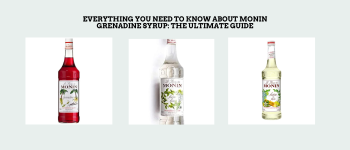 21st Dec 2024
21st Dec 2024
 17th Dec 2024
17th Dec 2024
 6th Aug 2025
6th Aug 2025
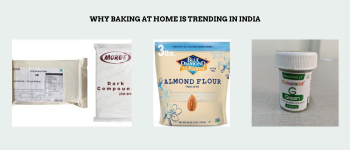 18th Nov 2024
18th Nov 2024
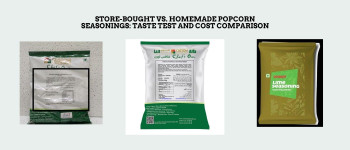 12th Nov 2024
12th Nov 2024
 30th Dec 2024
30th Dec 2024
 7th Jan 2025
7th Jan 2025
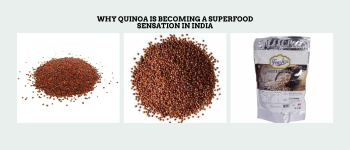 15th Oct 2024
15th Oct 2024
 30th Nov 2024
30th Nov 2024
 22nd Oct 2024
22nd Oct 2024
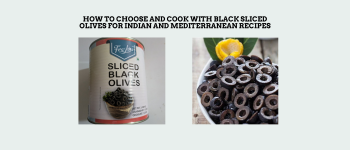 2nd Aug 2025
2nd Aug 2025
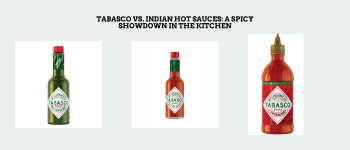 11th Nov 2024
11th Nov 2024
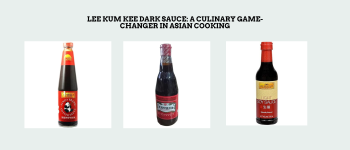 17th Dec 2024
17th Dec 2024
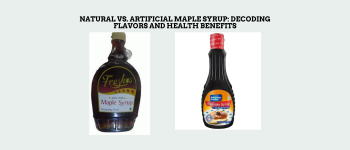 12th Nov 2024
12th Nov 2024
